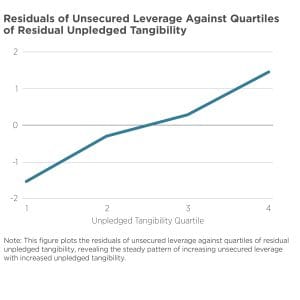A long-standing idea in the social sciences is that networks matter for innovation. They facilitate knowledge transfer and diffusion, and stimulate creativity by providing access to different types of knowledge and perspectives. Ronald Burt’s influential work on “structural holes” suggests that individuals who bridge disconnected groups have advantages in detecting and developing valuable opportunities. Despite the theoretical importance of networks for innovation, empirical evidence remains limited.
Remote work significantly disrupts innovation networks.
In this paper, the authors fill this gap using data from over 28,000 innovators within a major IT services firm. They track employee ideas submitted through the company’s formal suggestion system, and examine how employees’ network positions affect whether their ideas are accepted and implemented. The authors measure three key network characteristics: degree (number of direct collaborators), network size (total people in one’s innovation network), and bridge centrality (the extent to which someone connects different clusters of employees). They find the following:
- Having more direct collaborators significantly improves idea quality. Each additional collaboration partner increases an employee’s idea acceptance rate by approximately 2.5 percentage points. This effect appears to work through the immediate effort and expertise that collaborators contribute to developing the idea, rather than through lasting knowledge transfer.
- “Bridging” across different groups within the company creates both costs and benefits. Employees who connect otherwise disconnected clusters of colleagues tend to produce lower-quality ideas in the short term, likely due to the coordination and communication challenges of working across different teams and perspectives. However, past bridging activity shows positive effects on current innovation, suggesting that the knowledge gained from bridging pays dividends over time.
- Bridging creates powerful positive spillovers for others. While bridgers themselves may struggle with immediate coordination costs, having a high-bridging colleague in one’s network increases idea quality by over 3 percentage points. This suggests that bridgers serve as valuable conduits of diverse knowledge and perspectives that benefit their entire network.
- Network size itself doesn’t matter much. After accounting for direct collaborations and bridging, simply being in a larger innovation network shows minimal impact on idea quality.
- Remote work significantly disrupts innovation networks. During the pandemic’s work-from-home period, employees collaborated with fewer people. The subsequent hybrid work period showed even more dramatic network degradation, with substantial decreases in collaborations, network size, and bridging activity.

This research provides rare insight into how the social architecture of innovation actually works within organizations. The findings suggest that while collaboration clearly enhances innovation, the most valuable network positions—those that bridge different parts of the organization—come with short-term costs that may discourage employees from pursuing them. Companies might need to explicitly reward bridging behavior to capture its substantial collective benefits.
The implications extend beyond individual career strategy to organizational design. Understanding these network dynamics could help companies structure teams and work arrangements to maximize innovation. As firms grapple with remote work policies, these findings highlight how administrative decisions about workplace arrangements can profoundly affect the collaborative networks that drive innovation.











